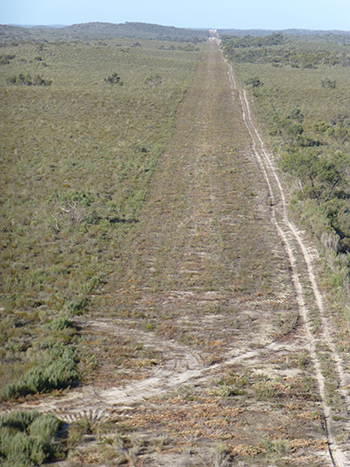Bushfire prevention – creating fuel breaks
- Fact sheet
- August 2015

Methods of reducing fuel
There are a number of methods you can use to create and maintain effective fuel breaks on your property.
Hand clearing
Hand clearing is often used to remove or reduce fine fuels (e.g. twigs less than a finger’s width) and leaf litter close to a dwelling. These hazards can be removed by hand tools such as rakes, hoes and leaf blowers and then disposed of (e.g. composting, mulching, or green waste collection).
Brushcutting/mowing
Hand held machinery (such as mowers and brush cutters) is very effective and often used to keep grass and other vegetation low.
Slashing/trittering
Large mechanical slashers, including ride-on-mowers and tractor-towed tools, are another economical way to reduce fuel levels. Slashing can leave grass in rows, increasing fuel in some places. To be most effective, the cut material should be removed or allowed to decompose well before summer.
Trittering or turbo mowing also mulches leaving the fuel where it is cut.
Note: mechanical fuel removal is not permitted on slopes of greater than 18° as there is a risk of soil erosion.
Tree pruning/removal
Pruning by thinning the tree canopy, and by removing branches that are overhanging or very close to a building, can help can significantly reduce the fire risk.
In most instances pruning will be sufficient to reduce the fire risk, but in some circumstances the complete removal of a tree may be necessary.
Removal or modification of a significant tree is subject to regulations and tou will need to contact your local council for further information.
Herbicide
Herbicides can be sprayed onto areas where other methods of fuel reduction may be difficult, such as around buildings, sheds, alongside fence lines and around fuel supplies.
Spraying should be conducted after the autumn or at the end of winter to be effective on actively growing plants. Check regrowth of sprayed fuel breaks and re-do if necessary with a plough, slasher or boom spray.
Planned burning
A planned burn involves the controlled use of fire to achieve planned native management objectives. A planned burn is only undertaken:
- in specified environmental conditions
- over a defined area
- at a particular time
- with a predetermined fire intensity and rate of spread.
Planned burns should only be undertaken by competent and experienced personnel. Please contact your local CFS office for further information.
More information
The information in this factsheet is taken from Managing native vegetation - reduce the impact of bushfires for this and other information refer to related links at the bottom of this page.
Related links
- Read about fire management on environment.sa.gov.au (web page link)
- Contact your local CFS office (web page link)
- Managing native vegetation - reduce the impact of bushfires (pdf)
- Bushfire prevention - bushfire management zones (fact sheet)
- Bushfire prevention - constructing fire access tracks (fact sheet)
- Bushfire recovery and agriculture (fact sheet)
- Bushfire recovery and biodiversity (fact sheet)